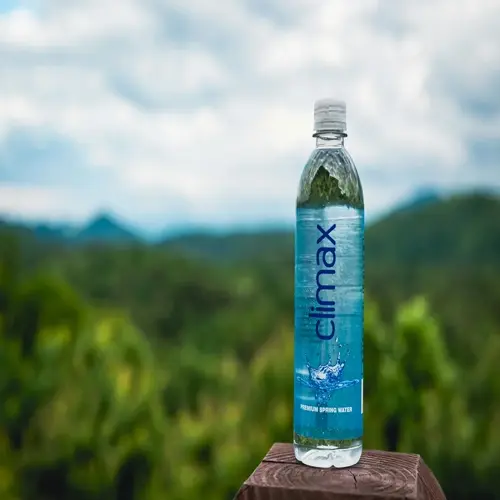Oxidative Stress Reduction: Proven Strategies

Written by
Robert Kelly
Reviewed by
Prof. Graham Pierce, Ph.D.To effectively reduce oxidative stress, we need to strike a balance between free radicals and antioxidants.
Opt for whole foods like berries, greens, and nuts for their natural antioxidant properties.
Learn stress relieving techniques to help manage your cortisol levels and avoid the leaking of mitochondrial free radicals.
While moderate exercise can boost antioxidant enzymes, excessive exercise can lead to greater oxidative substances that contribute to cellular oxidative stress.
Use cooking methods at the correct temperature and below 350°F to retain antioxidant foods and nutrients.
Combine dietary, exercise, and lifestyle approaches to achieve cumulative effects of oxidative balance.
Article Navigation
Combating oxidative stress begins with recognizing cellular imbalance. The body is constantly at war between free radicals and antioxidants. When free radicals are too powerful to be defended against, they harm the cells. This imbalance leads to premature aging and hinders the body's natural repair mechanisms. This is the ongoing battle in every cell in the body.
Think of antioxidants as your team in cellular renovation. They neutralize rogue substances before injury occurs. Suppose there are not enough antioxidants, free radicals over-run your defenses. This puts strain on the integrity of your cells and energy production. I have seen clients suffer from this malaise and feel constantly fatigued.
Real power rests in your hands to restore balance. Simple choices you make each day strengthen your antioxidant defense systems. In this article, you will become acquainted with practical methods of oxidative stress reduction. You will learn how food, exercise, and habits give cellular resiliency. Let us build your protection plan together.
Understanding Oxidative Stress
Your mitochondria are tiny power plants. They make energy but emit free radicals as exhaust. During normal metabolism, electrons escape and form those unstable molecules. This process continues constantly as your cells produce energy in the form of ATP. This combustion is a necessary evil.
Free radicals have two important purposes. They act as messengers of cellular repair and immune defense. However, uncontrolled buildup results in the destruction of proteins and DNA. This dual purpose makes balance essential. I have evaluated oxidative markers in patients and have noticed how quickly imbalance develops over prolonged periods of time.
Your body unleashes antioxidant enzymes such as SOD and catalase as front-line defenders. They neutralize free radicals at the scene. Nutritional antioxidants, such as vitamins C and E, provide a backup. Glutathione, your master antioxidant, recycles other protectors. They form the cellular shield together.
To effectively reduce oxidative stress, you must enhance both systems. You build enzymatic defenses through proper nutrition. You supply raw materials for non-enzymatic antioxidants through diet. The double approach protects cellular communication and prevents damage. With appropriate support, it knows how to heal itself.
Free Radical Generation
- Free radicals like superoxide (O2-) form as natural byproducts of mitochondrial energy production
- Approximately 0.15-5% of consumed oxygen converts to ROS during cellular respiration
- Electron transport chain leaks electrons at complexes I and III during ATP synthesis
- Immune cells intentionally produce ROS to combat pathogens (oxidative burst)
- Xenobiotics from processed foods increase free radical production in liver cells
Antioxidant Defense Systems
- Enzymatic antioxidants include superoxide dismutase converting O2- to H2O2
- Catalase and glutathione peroxidase break down H2O2 into water
- Non-enzymatic antioxidants (vitamin C, E, glutathione) neutralize radicals
- Defense systems maintain redox balance through electron donation mechanisms
- Glutathione recycling requires NADPH from pentose phosphate pathway
ROS in Cellular Signaling
- Low-level ROS activate transcription factors like NF-kB and HIF-1a
- Moderate ROS regulate cell growth, immune responses, and stress adaptation
- Excessive ROS damage lipids through peroxidation chain reactions
- Protein oxidation alters enzyme function and cellular communication pathways
- Nitric oxide synthase produces signaling molecules and potential oxidants
Mitochondrial Dynamics
- Fission and fusion processes regulate mitochondrial shape and function
- Damaged mitochondria removed through mitophagy quality control
- Uncoupling proteins reduce membrane potential and ROS generation
- Caloric restriction enhances mitochondrial efficiency and reduces leaks
- Coenzyme Q10 shuttles electrons in electron transport chain
Cellular Damage Pathways
- Lipid peroxidation creates reactive aldehydes like malondialdehyde
- Oxidized LDL cholesterol contributes to arterial plaque formation
- DNA oxidation causes mutations and breaks in genetic material
- Protein carbonylation leads to loss of enzymatic function
- 8-OHdG biomarker indicates oxidative damage to nucleotides
Sources of Oxidative Stress
There are two primary sources of oxidative stress. The first is that free radicals are created by natural metabolic processes inside the body. When metabolic energy is produced in the mitochondria, electrons leak out as the energy chain progresses and form reactive molecules. The second is outside sources, such as pollutants and radiation, which cause an increase in the amount of oxidants. Your body can handle both of these through its antioxidant defenses.
Processed foods actively promote the formation of free radicals. Fried foods contain oxidized fats that trigger chain reactions. Artificial ingredients are metabolized, producing reactive products. Sugars accelerate glycation, resulting in the formation of advanced glycation end products. I have seen the blood markers of clients to whom I have taught nutrition, so I know the effects are real.
Ultraviolet radiation affects skin cell plasma membranes directly. It generates single oxygen molecules, which are responsible for the oxidation of lipids. This sun exposure depletes the local antioxidant reserves, which the organism possesses. Cumulative damage to the skin appears as premature ageing. Daily sunblock therapy has a significant effect on oxidative stress.
Chronic stress elevates cortisol levels, resulting in increased mitochondrial leakage. This hormone imbalance creates measurable oxidative stress biomarkers. Low glutathione levels and high lipid peroxide levels are observed in tests. Mindfulness exercises have been shown to decrease these damaging markers. The mind state has a direct impact on cellular health.
Metabolic Processes
- Mitochondrial respiration leaks electrons during ATP energy production
- Immune cell activity generates free radicals to combat pathogens
- Detoxification enzymes produce ROS as metabolic byproducts
- Approximately 1-3% of cellular oxygen converts to reactive species
- Hormone metabolism creates oxidative byproducts during conversion
Environmental Toxins
- Airborne particulate matter penetrates lung tissue causing inflammation
- Pesticide residues on produce trigger cellular oxidation reactions
- Heavy metals like cadmium catalyze Fenton reactions in cells
- Industrial solvents generate free radicals through metabolic activation
- Plastic additives disrupt mitochondrial electron transport chains
Dietary Factors
- Fried foods contain oxidized lipids from high-heat cooking
- Processed sugars accelerate glycation and free radical production
- Artificial preservatives form reactive metabolites during digestion
- Alcohol metabolism depletes glutathione stores in liver cells
- Charred meats contain pro-oxidant heterocyclic aromatic amines
Radiation Exposure
- Ultraviolet sunlight creates singlet oxygen in skin cell membranes
- Medical imaging radiation generates hydroxyl radicals in tissues
- Electromagnetic fields from devices may increase ROS production
- Air travel at high altitude increases cosmic radiation exposure
- Sunlight-reflective surfaces amplify ultraviolet-induced oxidative damage
Psychological Stressors
- Cortisol elevation increases mitochondrial free radical leakage
- Chronic anxiety depletes antioxidant enzyme reserves over time
- Sleep deprivation reduces melatonin-based antioxidant protection
- Emotional distress triggers inflammatory cytokine cascades
- Exam pressure measurably lowers glutathione levels clinically
Dietary Approaches
Prefer whole foods instead of supplements for real antioxidant capacity. Berries such as blueberries contain anthocyanins, which protect brain cells. Leafy greens contain lutein, which protects cells from light damage. Nuts contain vitamin E, which protects cell membranes. Food synergy can provide more protection than nutrients isolated from food.
Water transfers glutathione, your body's master antioxidant, inside cells. Water efficiently transports toxins to the elimination pathways. Herbal teas provide hydration solutions while also adding polyphenols. I recommend 2-3 liters of water daily, with the color of your urine serving as your guide. Adequate hydration can revitalize all of the antioxidant defense systems your body has.
Gentle cooking preserves valuable nutrients. Steam vegetables for a short time to keep glucosinolates intact. Sauté at a temperature below 350°F with avocado oil to prevent oxidation. Eat tomatoes, which are more efficiently absorbed when cooked, for viable supplies of lycopene. Use raw garlic to provide allicin, which is necessary for immune support. How you cook determines the nutritional pay-off.
Spices have concentrated protection. Curcumin in turmeric reduces inflammation markers. Ginger contains gingerols that protect cells from oxidation. Use them raw in dressings or smoothies. Store the oils in dark bottles to avoid damage from light. Small culinary choices add up to a significant number of antioxidant boosts each day.
Berries and Fruits
- Blueberries contain anthocyanins that cross blood-brain barrier for neural protection
- Citrus fruits provide vitamin C for collagen synthesis and immune cell function
- Pomegranates offer punicalagins that help reduce LDL oxidation
- Consume 2-3 daily servings with varied colors for phytonutrient diversity
- Opt for frozen options when fresh unavailable to retain antioxidant levels
Leafy Greens
- Spinach delivers lutein protecting retinal cells from light-induced oxidation
- Kale contains sulforaphane activating Nrf2 antioxidant pathway genes
- Swiss chard provides alpha-lipoic acid regenerating vitamins C and E
- Steam lightly to preserve glucosinolates while improving bioavailability
- Pair with healthy fats like olive oil for fat-soluble nutrient absorption
Nuts and Seeds
- Walnuts offer ellagic acid and melatonin for mitochondrial protection
- Flaxseeds contain lignans modulating estrogen-related oxidative pathways
- Pumpkin seeds provide zinc cofactor for superoxide dismutase enzymes
- Soak overnight to reduce phytates and enhance mineral bioavailability
- Limit to 1 oz (28g) daily due to calorie density while ensuring nutrient intake
Beverages
- Green tea catechins inhibit lipid peroxidation in cell membranes
- Plain water maintains blood viscosity for efficient antioxidant circulation
- Black coffee contains chlorogenic acid reducing DNA oxidation markers
- Consume 2-3 liters (68-101 fl oz) daily including herbal teas and infused waters
- Avoid sugary drinks that increase glycation end-product formation
Spices and Oils
- Turmeric contains curcumin modulating NF-κB inflammation pathways
- Extra virgin olive oil provides hydroxytyrosol preventing LDL oxidation
- Ginger offers gingerols inhibiting cyclooxygenase enzyme activity
- Use raw in dressings or low-heat cooking below 350°F (177°C)
- Store in dark bottles to prevent photoxidation of phenolic compounds
Lifestyle Modifications
Reducing stress directly protects your supply of glutathione. Increased cortisol levels from stress lead to the production of free radicals, thereby depleting your antioxidant supply. Daily meditation helps decrease your stress hormones, thereby protecting your body's cells. Breathing exercises have decreased immediate oxidative markers in my clients. These practices keep your master antioxidant available for detoxification.
Enhance your sleeping environment for maximum melatonin production. Having complete darkness significantly increases the production of natural antioxidants. A cool room temperature, around 65 degrees Fahrenheit, significantly enhances the quality of sleep. Blocking blue light is helpful two hours before bedtime. I use blackout curtains and have noticed that being able to sleep more deeply, my bedroom then becomes a factory each night of anti-oxidants.
Breathing clean indoor air lowers pollutant exposure. HEPA filters pick up tiny particles causing inflammation. Use bamboo charcoal bags to absorb chemical vapors. Houseplants like the peace lily filter formaldehyde. Open windows daily to exchange stale air. These steps make a safer breathing environment.
Social connections reduce inflammatory markers. Humor decreases biomarkers used to measure oxidative stress. Meeting regularly reduces cortisol levels naturally. Having pets can reduce cellular damage associated with loneliness and a lack of companionship. I assess clients' improvement after they reconnect socially. Caring relationships provide biological protection.
Stress Management
- Daily meditation significantly reduces cortisol levels
- Breathing exercises like 4-7-8 technique lower blood pressure
- Nature exposure decreases inflammatory cytokine activity
- Journaling reduces rumination and oxidative stress
- Digital detoxes prevent blue light-induced melatonin disruption
Sleep Optimization
- Complete darkness substantially increases melatonin production
- Cool room temperatures between 60-67°F (15-19°C) support sleep quality
- Consistent sleep schedule aligns with natural circadian rhythms
- Blue light blocking glasses improve sleep onset efficiency
- White noise machines mask disruptive environmental sounds
Environmental Detox
- HEPA air filters capture airborne particulates effectively
- Bamboo charcoal bags absorb volatile organic compounds
- Houseplants like peace lilies reduce indoor formaldehyde
- Ventilation systems exchange indoor air multiple times hourly
- Natural cleaning products eliminate chemical exposures
Tobacco and Alcohol
- Smoking cessation increases antioxidant enzyme activity
- Limiting alcohol prevents glutathione depletion in liver cells
- E-cigarette vapor contains heavy metals triggering oxidation
- Alcohol-free days support liver regeneration
- Nicotine replacement aids smoking cessation efforts
Social Connection
- Regular social engagement lowers inflammatory markers
- Community participation reduces stress hormone levels
- Laughter therapy enhances immune cell activity
- Pet ownership decreases loneliness-related cellular stress
- Volunteer work correlates with improved cellular longevity
Exercise and Oxidative Balance
Moderate exercise boosts your antioxidant defenses, but excessive exercise increases free radicals and reactive oxygen species. Brisk walking increases SOD, which protects the cells in the body. Overtraining can lead to oxidative damage due to inadequate recovery. Regulate the intensity according to your physical level. I adjust clients according to the outputs of their fatigue signals.
Aerobic training leads to the creation of mitochondria, improving energy metabolism in the cell. More cycling produces more mitochondria, which means less leakage of electrons. Naturally, this upgrade results in reduced free radical production. This adaptation is best improved in Zone 2 training. The result is that the cells are cleaner producers of energy.
Exercise resistance trains Nrf2 pathways, thereby elevating glutathione levels. Multijoint movements, such as squats, promote the body to produce antioxidant enzymes. Controlled eccentric motions may reduce mechanical stress. Exercising twice a week will enhance your capacity to adapt to stress on a cellular level. I assess my clients based on the speed of their recovery.
Restoration of redox balance after exertion occurs with recovery. Active walking flushes metabolic byproducts from exercise. Rehydration replaces the enzymes that depend on electrolytes, and compression garments lower markers of inflammation. As a general rule, allow 48 hours between short bouts of intense activity. The body heals itself from oxidative damage during the recovery process.
Moderate Aerobic Training
- Brisk walking enhances superoxide dismutase activity significantly
- Cycling improves mitochondrial density and efficiency
- 150 minutes weekly builds antioxidant defenses sustainably
- Heart rate zone 2 training optimizes aerobic adaptation
- Post-exercise antioxidant surge protects cellular components
Strength Resistance
- Weightlifting increases glutathione production over time
- Compound movements activate Nrf2 antioxidant pathways
- 2 weekly sessions stimulate muscle antioxidant enzymes
- Controlled eccentric phases minimize mechanical stress
- Progressive overload enhances adaptive antioxidant response
High-Intensity Interval Training
- Short bursts increase catalase and superoxide dismutase transiently
- 1:3 work-rest ratio balances reactive oxygen species production and clearance
- Maximum twice weekly prevents cumulative oxidative damage
- Post-training antioxidant surge exceeds moderate exercise benefits
- Requires 48-hour recovery for redox balance restoration
Flexibility and Balance
- Yoga downregulates inflammatory NF-kB pathways
- Tai chi reduces cortisol and lipid peroxidation markers
- Daily stretching improves blood flow for antioxidant delivery
- Mind-body connection lowers exercise-induced stress hormones
- Enhances parasympathetic recovery after intense sessions
Recovery Protocols
- Active recovery sessions flush exercise-induced metabolites
- Hydration replenishes electrolyte-dependent enzyme functions
- Compression garments reduce inflammation biomarkers
- Sleep extension repairs exercise-induced oxidative damage
- Contrast showers balance hormetic stress responses
5 Common Myths
Antioxidant supplements throughout are favorable and can be consumed in unlimited quantities without endangering the health of any of the World's animals.
Once again it is necessary to explain that high-dose antioxidant supplements are pro-oxidants and are laboring to increase cell damage and GENERAL development. Once again it is necessary to explain that whole foods yield balanced phytonutrient complexes that are healthful in their interrelationships, whereas isolated supplements are apt to lose those protection-seeking co-factors and with it the disruption of redox control of bodies through excessive doses.
Any free radical is damaging, and total elimination from the system is essential for perfect well being.
Free radicals are necessary for biological processes such as immune defense against pathogens and cellular signaling for growth and repair. The proper oxidizing environment is vital for body functions as the role of hydrogen peroxide in wound healing and nitric oxide in vasodilation demonstrates. Total elimination would impair all important body processes.
Exercise produces oxidative stress, which must be minimized to protect the cells from injury.
Moderate exercise produces mitochondrial biogenesis and increased activity of endogenous antioxidants, such as super oxide dismutase and glutathione peroxidase. This is a hormetic response producing cellular acclimatization against oxidative stress. Only an uncontrolled increase in exercise without adequate recovery can produce a net oxidative condition, while proper programs promote a long-term benefit for antioxidant activity.
Organic food has no oxidative stresses, is always nutritionally better for oxidative injury.
Organic produce will always have natural oxidative stresses, i.e., polyamines and may oxidize from UV light during growth. The main advantage is less exposure to pesticide chemicals, not no exposure to all pro-oxidants. Properly washed conventional produce can still be part of an anti-oxidant supplying diet even when organic food is unavailable and/or cost prohibitive.
Drinking too much water is safe: it helps rid the system of toxins and lower oxidative stress.
However, overhydrating dilutes electrolytes which are needed for the proper functioning of antioxidant enzymes, especially those involved in the sodium-dependent recycling of glutathione. Adequate hydration (2-3 liters of fluid daily) is essential for the growing process of detoxifying but too much can stress the renal system or provide just the opposite effect of raising the oxidative markers of possible free radical damage. Adequate fluids in accordance with bodily needs helps attain optimal cellular hydration, free of electrolyte imbalance.
Conclusion
By combining nutrition, exercise, and lifestyle, one can attain potent cumulative effects. Foods rich in antioxidants help strengthen cellular defenses on a daily basis. Exercise stimulates the body's production of its own antioxidants. Management of stress maintains reserves of glutathione. Their total effect is multiplicative and far greater than the sum of their parts. The body reacts to this layered support.
Adapt your approach according to varying needs. For instance, some people thrive on a vegetarian diet, while others find it too low in protein. Choose exercises that correspond with how much energy you do or do not have. If you want to track how different relaxation methods affect your sleep patterns, this is also beneficial. I create individualized plans for my clients, taking into account their unique biochemical makeup.
Advancement is more important than perfection. A daily intake of vegetables is a greater boost to health than an occasional perfect meal. Regular moderate activity is more beneficial than sporadic intense exercise. Success in relieving stress in small amounts gives an advantage that compounds. If you miss a day or two, it does not drop the benefits down to zero. Your systems for repairing cells react favorably to a consistent source of support.
Oxidative balance directly pertains to longevity. When your cells are protected, they operate efficiently, thereby delaying aging processes. Reduced inflammation curtails the onset of chronic disease. Healthy mitochondria produce energy for decades. This foundation portends wellness and longevity. You can begin building your cellular resilience today.
External Sources
Frequently Asked Questions
What are the most noticeable symptoms of high oxidative stress?
Common symptoms include persistent fatigue, brain fog, frequent infections, and accelerated skin aging. These occur because oxidative damage impairs cellular energy production, immune function, and tissue repair processes. Chronic inflammation often accompanies these symptoms.
Which vitamins are most effective against oxidative stress?
Vitamins C and E are potent antioxidants that neutralize free radicals. Vitamin C regenerates vitamin E while protecting water-soluble cellular components, and vitamin E safeguards lipid membranes from peroxidation. Their synergistic action provides comprehensive cellular protection.
What dietary approach best reduces oxidative stress?
Prioritize these antioxidant-rich foods:
- Colorful berries containing anthocyanins
- Leafy greens rich in carotenoids
- Nuts and seeds with vitamin E
- Fatty fish providing omega-3s
- Spices like turmeric with curcumin
How does exercise impact oxidative stress?
Moderate exercise stimulates antioxidant enzyme production while excessive activity increases free radicals. Aerobic training enhances mitochondrial efficiency, strength training activates Nrf2 pathways, and proper recovery allows oxidative balance restoration through natural detoxification processes.
What lifestyle habits increase oxidative stress?
Key contributors include:
- Chronic psychological stress elevating cortisol
- Inadequate sleep disrupting melatonin production
- Exposure to environmental pollutants
- Tobacco use and excessive alcohol consumption
- Diets high in processed foods and sugars
Which fruits offer the strongest antioxidant protection?
Pomegranates contain punicalagins that protect LDL cholesterol from oxidation. Berries like blueberries and blackberries provide anthocyanins that cross the blood-brain barrier, while citrus fruits deliver vitamin C for immune cell protection.
How do cooking methods affect food antioxidants?
Gentle techniques preserve nutrients best:
- Steaming retains water-soluble vitamins
- Raw consumption maintains enzyme activity
- Sautéing below 350°F prevents oil oxidation
- Avoid frying which generates acrylamides
- Lightly cook tomatoes to increase lycopene
What role do minerals play in oxidative balance?
Selenium supports glutathione peroxidase enzymes, zinc is essential for superoxide dismutase function, and copper aids in electron transport. These mineral-dependent enzymes form the body's primary defense system against reactive oxygen species.
Can hydration affect oxidative stress levels?
Proper hydration maintains blood viscosity for efficient antioxidant circulation and supports glutathione transport. However, overhydration dilutes electrolytes needed for antioxidant enzyme function, so balance intake with physiological needs.
What are the most effective stress-reduction techniques?
Implement these evidence-based practices:
- Daily meditation regulating cortisol
- Breathing exercises lowering blood pressure
- Nature exposure reducing inflammation
- Digital detoxes preventing melatonin disruption
- Journaling decreasing rumination

